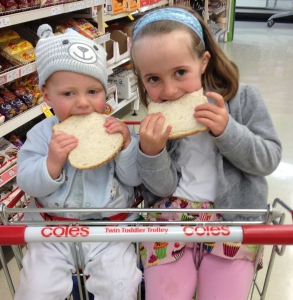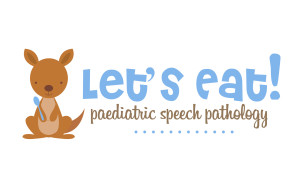
In Australia, we are limited as therapists with the ease of accessibility to feeding training. Don’t get me wrong, there are a lot of great feeding courses offered here in Australia but in comparison to the variability and intensity offered around the world and in particular America, we are limited.
SOS (Sequential Oral Sensory) Program is a commonly known program in Australia. Dr Kay Toomey and her team have been coming to Australia for close to 10 years training Australian professionals. Her systematic desensitisation (sensory) based program is great for fussy eaters and restricted eaters and after doing her training in 2013, I always refer to her 32 steps of eating with clients.
But there are other models around including behavioural models (more to come in a later blog post) as well as responsive feeding programs. A commonly known responsive feeding program is Ellyn Satter’s Division of Responsibility and I loved learning from Ellyn when she came to Australia in 2015. I’m excited to tell you that next year in 2021 we have another feeding team coming, who specialise in Responsive feeding.
But what is responsive feeding? The basic premise of it lies in responsive parenting. And a commonly known responsive parenting program in Australia is the Circle of Security. When I did my COS training in 2018, this trust-based relationship could not have spoken higher to me as a parent and professional.
Responsive feeding is based on building trust around food. It honours a child’s cues of hunger and supports the warm loving approach between a parent and their child.
The responsive feeding program that I would love to tell you about today is the Extreme Picky Eating STEPS + approach by Dr Katja Rowell (a doctor specialising in responsive feeding) and Jenny McGlothlin (a feeding speech pathologist). Jenny and her colleague Grace Wong are our responsive feeding presenters for August 2021.
The STEPS+ approach is a big favourite of ours at Let’s Eat, we love it because it doesn’t “make” a child eat but rather follows the child’s lead.
One of the biggest things I love about this program is the focus of parents as experts. When you have a child with a feeding difficulty, there is a lot of stigma and feelings of failure – it’s a basic skill isn’t it to feed your child? So what happens when you can’t?
I love this approach because it builds back up this beautiful and warm relationship between a parent and a child. Creating trust again around food and mealtimes. And surprise surprise, the mealtime tantrums reduce when this approach is taken.
STEPS+ doesn’t focus on “clinical sessions between the therapist and child” like many other programs, but rather it coaches the parents to make changes at home; it focuses on the family goals and meals rather than a random list of therapy foods.
Whenever I talk about this program with a parent, it’s like a light bulb switches on for them – it’s the relationship they want with their child and this program (while not a quick fix – let’s be clear), this program makes small and trust based restorative steps towards their family goals.
On the Extreme Picky Eating website, this quote always stands true to me and I’m so grateful to be working with fellow Dietitians and Paediatricians in Australia who also breathe this phrase:
“The trust and relationship between parent and child cannot be sacrificed for nutrition or growth goals.” – Taken from Helping Your Child with Extreme Picky Eating
So what does STEP+ stand for? It’s basically 5 steps that the parent (and therapist) walk through with a child. Slow and steady is the goal here. I’ve taken this from their website and if you want to know more, please purchase their books, I have several copies. It’s a well read text of ours at Let’s Eat.
Step 1: Decrease stress,
anxiety (yours and your child’s), and power struggles
Step 2: Establish a
routine
Step 3: Enjoy
pleasant family meals
Step 4: Build
skills in “what” and “how” to feed
Step 5: Strengthen
and support oral motor and sensory skills
Katja Rowell and her colleagues Johanna Cormack and Gianina-Ioana Postavaru recently published an article for therapists to help understand the responsive feeding framework. Their article can be found here. In their article, they proposed a theory called “Self-Determination Theory”. Which has 3 basic needs – autonomy, relatedness and competence. It’s a great article and if you are a therapist, well worth a read.

So to finish off, 5 reasons why I love this approach?
- It recognises the importance of supporting innate skills of self regulation in a child (ie the awareness of knowing when you’re full and when you’re hungry). We are all born with this skill but over time with environmental influences, this can be diminished.
- It highlights the parent as the expert and honours their role in feeding. It builds their confidence and helps them stay strong when faced with other people’s opinions and suggestions (because we have all been there!)
- Responsive feeding as an approach is recognised and held by the World Health Organisation (WHO) and that’s so important to remember.
- It can be used for all children – general fussy eaters, restricted eaters, children with Autism Spectrum Disorder (ASD) and children with special needs
- But most importantly, I see a child’s smile when they try a new food for the first time – not because I told them to but because they wanted to. A child who has interest in trying food is a parent’s biggest goal because with interest, comes new foods naturally (without stickers and rewards) and for me, responsive feeding and the STEPS+ approach achieves this.
But is it the only program we use at Let’s Eat? We use a lot of responsive feeding approaches (and one of them is the STEPS+ approach) but we also use sensory based and behavioural programs.
Why? Because I truly don’t believe that one size fits all, I refuse to put myself in one camp. I would rather keep my mind open to any approach with humility and wisdom.
And remind myself that every parent walks into our clinic with their own relationship with food and every child walks in with their own sensory and oral motor skills. So taking the phrase, one size doesn’t fit all, I remind all therapists (and will be teaching this in my feeding workshop for professionals in November 2020) that we don’t know it all, so don’t presume you do, it’s time to stop and listen carefully and honestly to what that parent and child who have walked into your clinic are telling you. Build trust and go from there.
Wishing you happy mealtimes
Val
Paediatric Feeding Speech Pathologist @ Let’s Eat! Paediatric Speech Pathology
This website and information on this blog post is provided for educational purposes. It is not meant or intended to replace Speech Pathology assessment and management nor medical or nutritional care for a child. It is recommended that you discuss any concerns or questions you might have with your Speech Pathologist and managing Doctor and develop an individualised team plan specifically for your child.

About the author of this blog post
Valerie Gent is an Australian based Speech Pathologist with 17 years experience in Paediatric Feeding. She has opened a private practice called ‘Let’s Eat! Paediatric Speech Pathology’ in 2013 for Newcastle based babies and children with feeding difficulties. Ashleigh, joined Val in 2020 and now both of these passionate and experienced feeding therapists support children with all levels of feeding difficulties. You can find out more about the team and ‘Let’s Eat! Paediatric Speech Pathology’ via their website www.letseatspeech.com.au and Facebook page www.facebook.com/LetsEatPaediatric SpeechPathology or email on valerie.gent@letseatspeech.com.au



